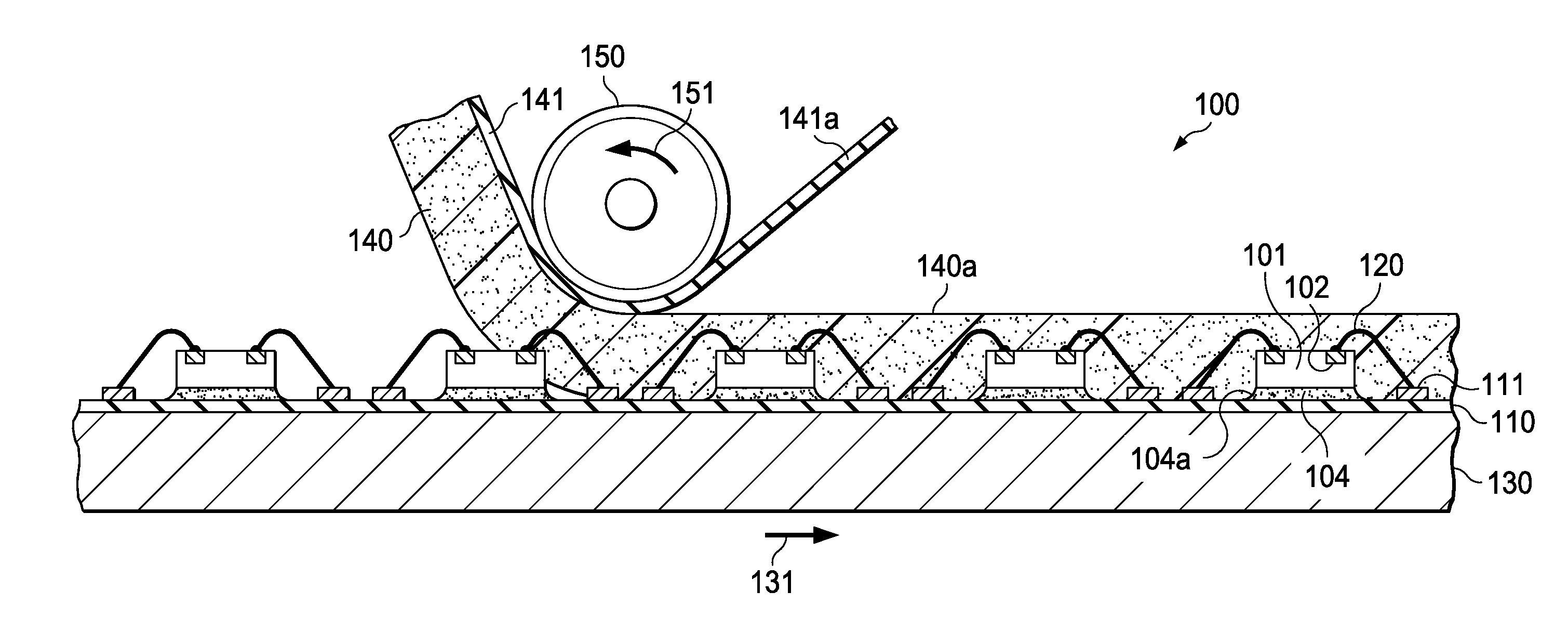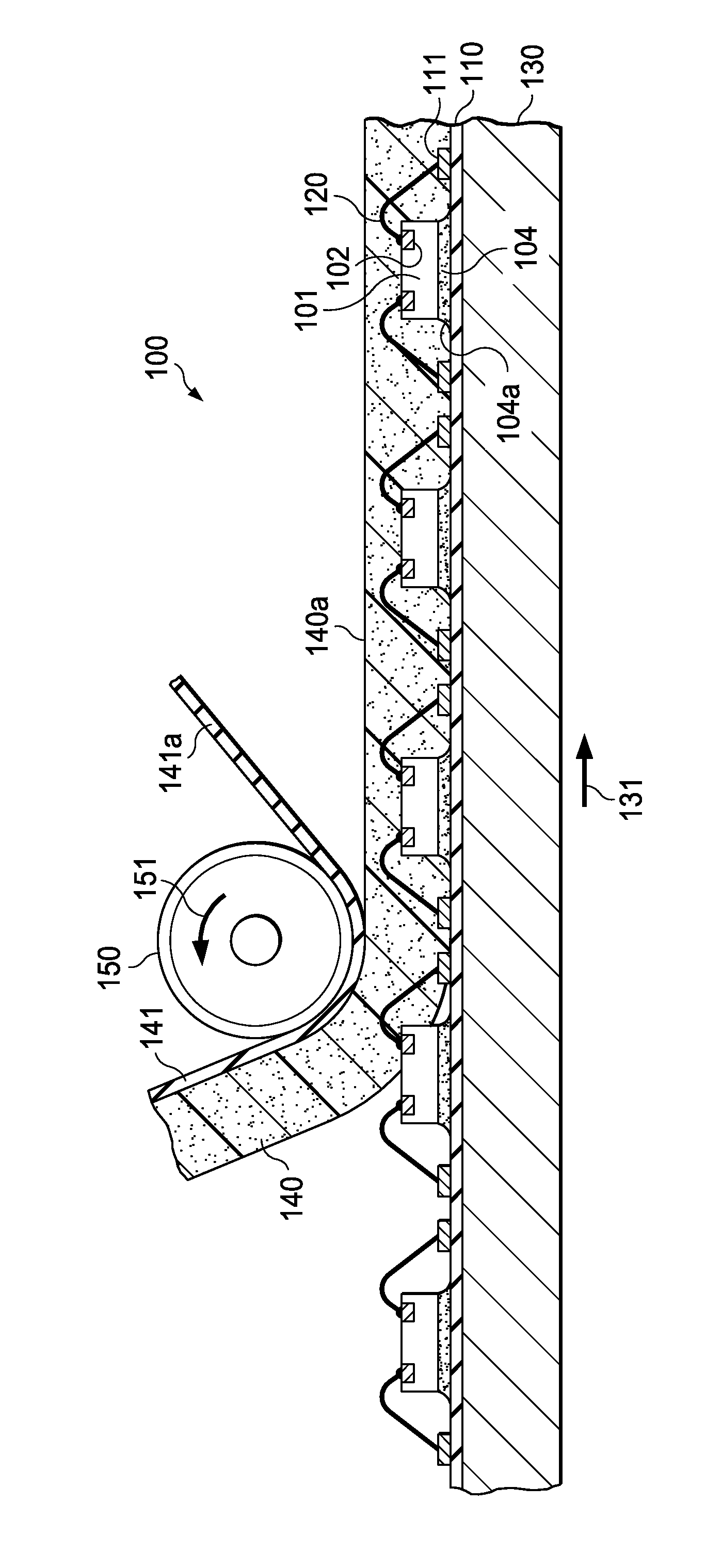Roll-on encapsulation method for semiconductor packages
a technology of semiconductor packaging and encapsulation, which is applied in the direction of semiconductor devices, semiconductor/solid-state device details, electrical devices, etc., can solve the problems of high cost of acquiring and maintaining molds, high failure rate, and perennial shortcomings, and achieves low viscosity, high encapsulation productivity, and the effect of eliminating a number of perennial shortcomings
- Summary
- Abstract
- Description
- Claims
- Application Information
AI Technical Summary
Benefits of technology
Problems solved by technology
Method used
Image
Examples
Embodiment Construction
[0017]The schematic FIG. 1 depicts in simplified manner an apparatus, generally designated 100, for executing the encapsulation method of semiconductor devices according to the invention. In FIG. 1, a plurality of semiconductor chips 101 with terminals 102 is assembled on an insulating substrate strip 110. In FIG. 1, substrate 110 is shown as a strip; alternatively, the substrate may be a sheet, on which the chips are arranged in a two-dimensional array. A variety of materials may be used as base material for the substrate. When the overall device thickness has to be kept at a low value, substrate 110 may be a plastic foil made of a polyimide compound in the thickness range from about 40 to 80 μm. Alternatively, substrate may be a somewhat thicker insulating board made of ceramic or FR-4. Integral with substrate 110 are conductive traces and through-holes; substrate 110 further has metallic contact pads 111 on its surface of chip attachment, suitable for metallic wire attachment, an...
PUM
 Login to View More
Login to View More Abstract
Description
Claims
Application Information
 Login to View More
Login to View More - R&D Engineer
- R&D Manager
- IP Professional
- Industry Leading Data Capabilities
- Powerful AI technology
- Patent DNA Extraction
Browse by: Latest US Patents, China's latest patents, Technical Efficacy Thesaurus, Application Domain, Technology Topic, Popular Technical Reports.
© 2024 PatSnap. All rights reserved.Legal|Privacy policy|Modern Slavery Act Transparency Statement|Sitemap|About US| Contact US: help@patsnap.com









